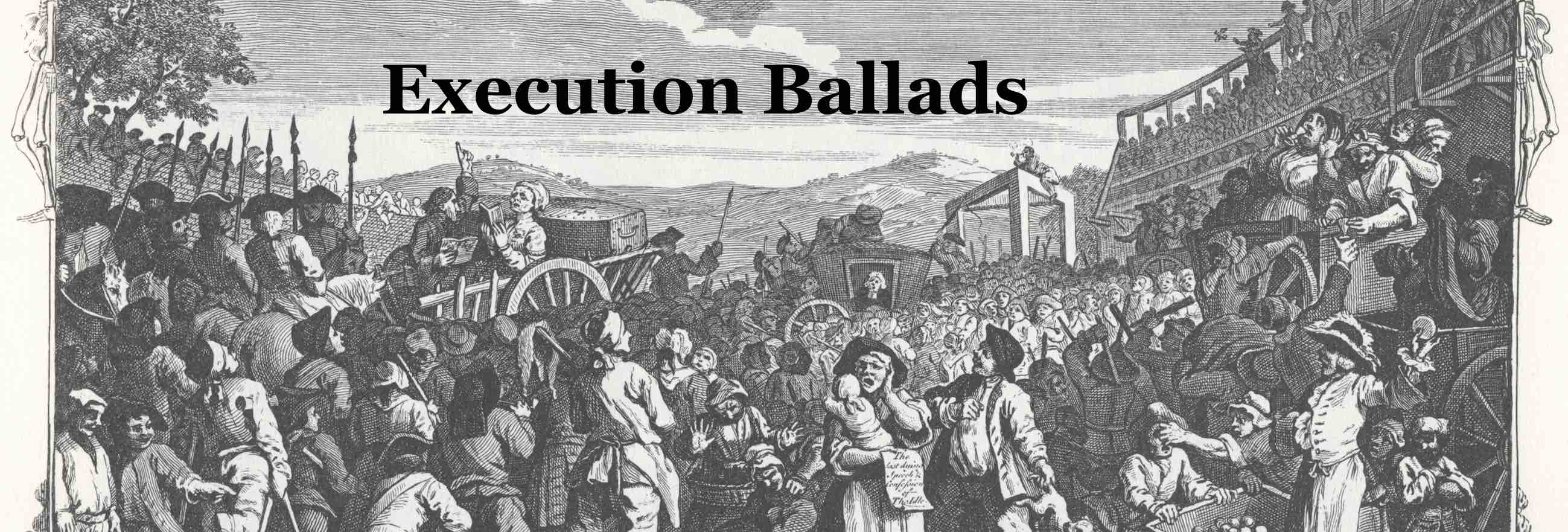Il lamento et la morte di Benedetto Mangone, capo di banditi nel regno di Napoli, con li crudelissimi assassinamenti che lui faceva in Campagnia.
Title
Il lamento et la morte di Benedetto Mangone, capo di banditi nel regno di Napoli, con li crudelissimi assassinamenti che lui faceva in Campagnia.
Subtitle
Come fu pigliato in Alessandria dalla Paglia vestito da pellegrino e condotto a Napoli dove fu attanagliato et arrotato,
Set to tune of...
Date
Printing Location
stampato in Firenze, appresso Zanobi Bisticci, l'anno 1605.
Notes
Wikipedia 'brigandage'
Until the middle of the 19th century Italy was divided into small states, so that the brigand who was closely pursued in one could flee to another. Thus it was that Marco Sciarra-illo of the Abruzzi, when hard pressed by the Spanish viceroy of Naples - just before and after 1600 - could cross the border of the papal states and return on a favourable opportunity. When pope and viceroy combined against him he took service with Venice, from whence he could communicate with his friends at home, and pay them occasional visits. On one such visit he was led into a trap and slain.[3]
Marco Sciarra was the follower and imitator of Benedetto Mangone, of whom it is recorded that having stopped a party of travellers which included Torquato Tasso, he allowed them to pass unharmed out of his reverence for poets and poetry. Mangone was finally taken, and beaten to death with hammers at Naples. He and his like are the heroes of much popular verse, written in ottava rima, and beginning with the traditional epic invocation to the muse. A fine example is The most beautiful history of the life and death of Pietro Mancino, chief of Banditi.[3] It begins:
äóì
"Io canto li ricatti, e il fiero ardire
Del gran Pietro Mancino fuoruscito
(Pietro Mancino that great outlawed man
I sing, and all his rage.)[3]
äó
In Kingdom of Naples, every successive revolutionary disturbance saw a recrudescence of brigandage down to the unification of 1860-1861. The source of the trouble was the support the brigands (like Carmine Crocco from Basilicata, the most famous outlaw during the Italian unification)[9] received from various kinds of manutengoli (maintainers) - great men, corrupt officials, political parties, and the peasants who were terrorized, or who profited by selling the brigands food and clothes.[3]
In Sicily, in 1866 two English travellers, Mr E. J. C. Moens and the Rev. J. C. Murray Aynesley, were captured and held to ransom. Mr Moens found that the manutengoli of the brigands among the peasants charged famine prices for food, and extortionate prices for clothes and cartridges.[3]
Until the middle of the 19th century Italy was divided into small states, so that the brigand who was closely pursued in one could flee to another. Thus it was that Marco Sciarra-illo of the Abruzzi, when hard pressed by the Spanish viceroy of Naples - just before and after 1600 - could cross the border of the papal states and return on a favourable opportunity. When pope and viceroy combined against him he took service with Venice, from whence he could communicate with his friends at home, and pay them occasional visits. On one such visit he was led into a trap and slain.[3]
Marco Sciarra was the follower and imitator of Benedetto Mangone, of whom it is recorded that having stopped a party of travellers which included Torquato Tasso, he allowed them to pass unharmed out of his reverence for poets and poetry. Mangone was finally taken, and beaten to death with hammers at Naples. He and his like are the heroes of much popular verse, written in ottava rima, and beginning with the traditional epic invocation to the muse. A fine example is The most beautiful history of the life and death of Pietro Mancino, chief of Banditi.[3] It begins:
äóì
"Io canto li ricatti, e il fiero ardire
Del gran Pietro Mancino fuoruscito
(Pietro Mancino that great outlawed man
I sing, and all his rage.)[3]
äó
In Kingdom of Naples, every successive revolutionary disturbance saw a recrudescence of brigandage down to the unification of 1860-1861. The source of the trouble was the support the brigands (like Carmine Crocco from Basilicata, the most famous outlaw during the Italian unification)[9] received from various kinds of manutengoli (maintainers) - great men, corrupt officials, political parties, and the peasants who were terrorized, or who profited by selling the brigands food and clothes.[3]
In Sicily, in 1866 two English travellers, Mr E. J. C. Moens and the Rev. J. C. Murray Aynesley, were captured and held to ransom. Mr Moens found that the manutengoli of the brigands among the peasants charged famine prices for food, and extortionate prices for clothes and cartridges.[3]
Collection
Citation
“Il lamento et la morte di Benedetto Mangone, capo di banditi nel regno di Napoli, con li crudelissimi assassinamenti che lui faceva in Campagnia.,” Execution Ballads, accessed December 17, 2025, https://omeka.cloud.unimelb.edu.au/execution-ballads/items/show/1080.
